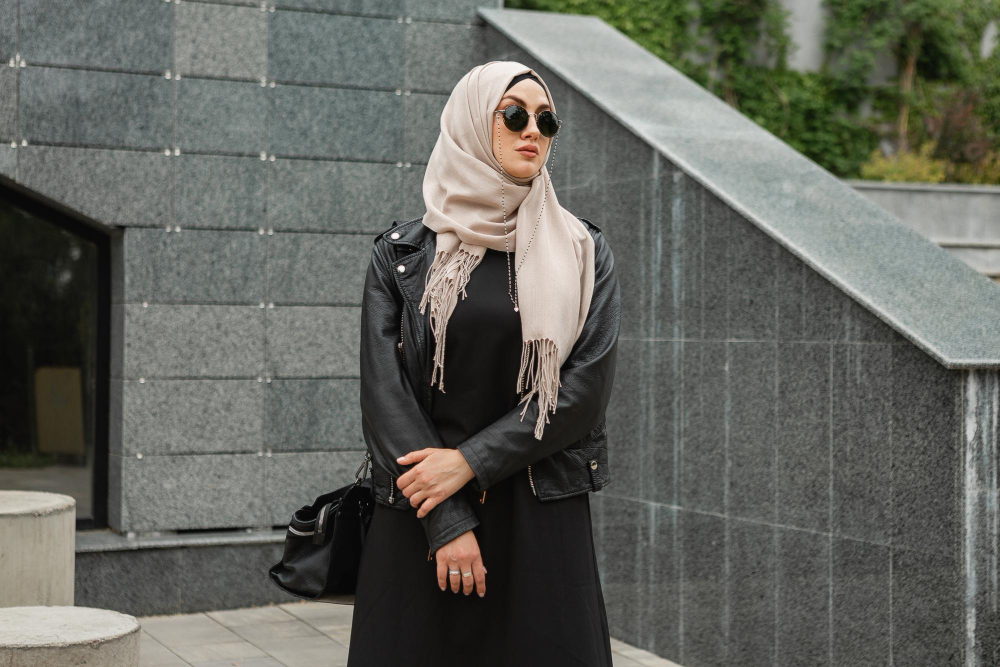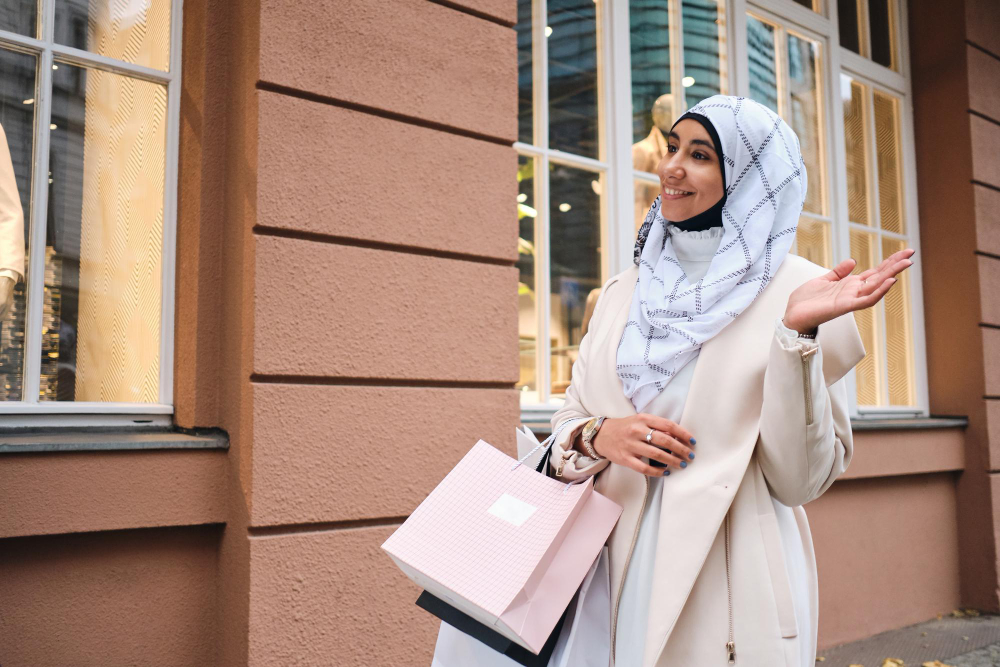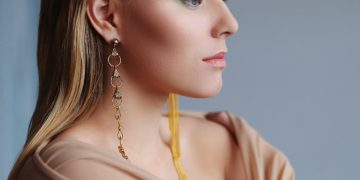Table of Contents
Introduction to Unveiling Hijab Fashion
Hijab fashion has transcended beyond a simple expression of modesty; it has become a powerful statement of cultural pride, personal style, and empowerment. In a world where fashion is constantly evolving, hijab-wearing women are proving that they can be just as trendy and stylish without compromising their values. Particularly in the UK, the hijab is a symbol of both tradition and contemporary fashion. This article explores how hijab fashion has become a prominent part of the UK’s fashion landscape, reflecting the global fusion of modesty and style.
The Essence of Hijab Fashion
At its core, hijab fashion is a celebration of modesty while embracing individualism. Many women who wear the hijab do so as an act of faith, but that doesn’t mean it limits their ability to express their personal style. In fact, the modern hijab fashion movement allows women to balance their religious beliefs with current fashion trends. Whether it’s through bold prints, luxurious fabrics, or creative layering, hijab fashion has evolved into an exciting space for women to express their creativity.
Hijab fashion challenges the idea that modest clothing is dull or restrictive. Women can wear headscarves and loose clothing while still showcasing their personality, creativity, and flair. This trend has grown especially vibrant in the UK, where women from diverse backgrounds find ways to incorporate modern, stylish elements into their traditional clothing.

Hijab Fashion in the UK Context
The UK has always been a melting pot of cultures, and hijab fashion has blossomed into a key part of the country’s diverse fashion scene. British-Muslim fashion influencers have been at the forefront of this movement, blending Western trends with modest styles. This fusion is creating a uniquely British hijab fashion scene that resonates both with hijab-wearing women and those who appreciate diverse fashion.
British designers, bloggers, and influencers have taken hijab fashion to new heights. By showcasing their stylish outfits on platforms like Instagram, TikTok, and YouTube, they have inspired women around the world to embrace modesty while staying fashion-forward.
The Evolution of Hijab Fashion
Traditional Hijab Styles
The origins of the hijab stem from religious and cultural practices within the Islamic faith. In its simplest form, the hijab was traditionally a plain scarf draped around the head, paired with long, flowing garments. The primary goal was modesty, with clothing designed to cover a woman’s body in a way that aligned with Islamic teachings. But even then, women found ways to add subtle personal touches to their attire, often through fabric choices or delicate embroidery.
The traditional styles were usually limited in terms of color, pattern, and variety. Most women opted for neutral tones like black, white, or beige, reflecting the cultural emphasis on simplicity and modesty. However, over time, fashion began to make its mark on hijab-wearing women.
Modern Hijab Fashion Trends
Fast forward to the 21st century, and hijab fashion has undergone a complete transformation. Today’s hijab fashion offers countless options in terms of fabric, color, style, and accessories. Women are no longer restricted to plain scarves. Instead, they can choose from a variety of patterns, prints, and luxurious fabrics like satin, silk, and chiffon. Modern hijab styles also vary greatly in terms of how the scarf is worn, whether it’s loosely draped or tightly wrapped in a chic turban style.
The Impact of Social Media on Hijab Fashion
One of the driving forces behind the rise of hijab fashion is the power of social media. Platforms like Instagram, YouTube, and TikTok have become valuable spaces for hijab-wearing influencers to share their fashion tips, styling hacks, and outfit inspirations. These platforms have allowed women from different backgrounds to share their personal styles, fostering a sense of community and empowerment.
Hijabi influencers have helped break down the misconception that modesty limits style. They showcase how creative layering, accessorizing, and experimenting with different hijab styles can lead to stunning fashion looks. Many UK-based influencers have even gained international recognition for their fresh take on modest fashion, cementing the UK’s place in the global modest fashion movement.
High-Street Brands and Hijab Collections
In response to the growing demand for modest fashion, UK high-street brands such as Zara, H&M, and Mango have launched collections tailored to the needs of hijab-wearing women. These collections include flowing tunics, maxi dresses, and scarves, all designed with modesty in mind. These collaborations between mainstream brands and the modest fashion community have opened up more options for Muslim women, allowing them to shop fashionable yet modest clothing without compromising their beliefs.
Additionally, several UK-based modest fashion designers have emerged, catering specifically to the hijab-wearing community. These designers are creating innovative, high-quality pieces that combine modern fashion trends with traditional modesty, making modest fashion more accessible than ever.

Styling the Hijab
Casual Hijab Looks
For everyday wear, comfort is key. Casual hijab styles are perfect for running errands, meeting friends, or relaxing at home. Women often opt for loose, breathable fabrics like cotton or jersey, which offer comfort while maintaining modesty. These materials allow the hijab to drape beautifully while keeping the wearer cool and comfortable.
Pairing a simple hijab with staple pieces like jeans, long tunics, or maxi dresses creates an effortless yet stylish look. Casual hijab fashion often focuses on minimalism, with muted colors and soft textures dominating the scene. However, that doesn’t mean the outfits are boring—women often add personality through subtle details like statement accessories or unique scarf draping techniques.
Formal and Occasion-Wear Hijabs
When it comes to special occasions such as weddings, formal dinners, or religious gatherings, women turn to more luxurious hijab fabrics and styles. Silk, satin, and chiffon scarves are often chosen for their elegant draping and sophisticated look. These materials add a touch of glamour to any outfit, whether paired with a simple abaya or an intricately embroidered dress.
Many women accessorize their formal hijab styles with decorative pins, brooches, or jeweled headbands, which add a polished and glamorous touch. These accessories can elevate even the simplest of outfits, making them perfect for special occasions.
Hijab Accessories
Styling with Pins and Scarves
Hijab accessories play a vital role in adding personality and flair to an outfit. Decorative pins, brooches, and underscarves can help keep the hijab in place while offering an extra layer of style. For example, metallic or gemstone-studded pins can complement both casual and formal looks, adding a subtle hint of sparkle.
Additionally, women often layer their scarves for added depth and texture. Layering two different fabrics or colors can create a unique look that reflects personal style, while also keeping the outfit modest and chic.
Layering for a Chic Look
Layering isn’t just for scarves; it applies to clothing as well. During colder months, women often layer long cardigans, coats, and sweaters over their outfits to stay warm while maintaining their modesty. This trend allows for creative combinations of textures and colors, adding dimension to a look. For example, pairing a flowy dress with a structured coat and a draped hijab can create a sophisticated yet effortless outfit.
Hijab and Cultural Identity
The Intersection of Faith and Fashion
For many Muslim women, wearing the hijab is a deeply personal choice tied to their faith. It is a symbol of modesty, piety, and devotion. However, that doesn’t mean it’s devoid of fashion. On the contrary, hijab fashion allows women to merge their faith with their love for style. It shows that modesty and fashion are not mutually exclusive but can coexist in a harmonious balance.
This intersection of faith and fashion is particularly relevant in today’s world, where women are taking control of their narratives and expressing themselves through fashion. By embracing hijab fashion, women are showing that they can be devout and fashionable at the same time.
Empowerment Through Hijab Fashion
Hijab fashion is empowering because it allows women to make their own choices about how they present themselves to the world. In a society that often places undue pressure on women to conform to certain beauty standards, hijab-wearing women challenge the notion that beauty is defined by how much skin is shown.
By owning their style and embracing modesty, these women are breaking stereotypes and redefining what it means to be fashionable. Hijab fashion proves that modesty can be stylish, empowering, and a form of self-expression.
Hijab Fashion and Inclusivity
Inclusivity in Fashion for Hijab Wearers
The fashion industry has increasingly embraced inclusivity, recognizing the importance of representing diverse communities. This is evident in the growing number of modest fashion collections and hijab-friendly clothing lines. Major brands are now catering to hijab-wearing women, offering them stylish options that align with their values.
Inclusivity is about more than just fashion—it’s about giving all women, regardless of their background or beliefs, the freedom to express themselves through their clothing. The modest fashion movement is a testament to this, as it shows that there is room for everyone in the fashion world.
Challenges and Progress
Despite the progress, challenges remain. Some women still face discrimination or judgment for wearing the hijab, especially in Western societies. However, the rise of hijab fashion influencers and the growing visibility of modest fashion have helped challenge these negative perceptions. By normalizing hijab fashion in mainstream media, these women are paving the way for greater acceptance and understanding.
Conclusion: The Future of Hijab Fashion
Hijab fashion is here to stay. It has become an integral part of the fashion industry, offering women more options to express themselves without compromising their values. The fusion of modesty and style has created a unique space where women can be both devout and fashionable, challenging societal norms and stereotypes.
As hijab fashion continues to evolve, it will undoubtedly inspire future generations of women to embrace their identities, make bold fashion choices, and show the world that modesty and style are not mutually exclusive.
For more insightful articles and fashion updates, please visit Glamour Script.
FAQs
What is Hijab Fashion?
Hijab fashion is a style movement that combines modesty with modern trends, offering a range of options for Muslim women to express their individuality while adhering to religious values.
How has social media influenced Hijab fashion?
Social media has played a huge role in hijab fashion by providing platforms for influencers to share styles, inspiring millions and helping to break stereotypes.
Can you style Hijabs for formal occasions?
Yes, hijabs can be styled for formal occasions using luxurious fabrics like silk or satin and accessorized with elegant pins and layers.
Are there sustainable options in Hijab fashion?
Absolutely! Many brands now offer eco-friendly hijabs made from sustainable materials such as organic cotton and bamboo.

















































